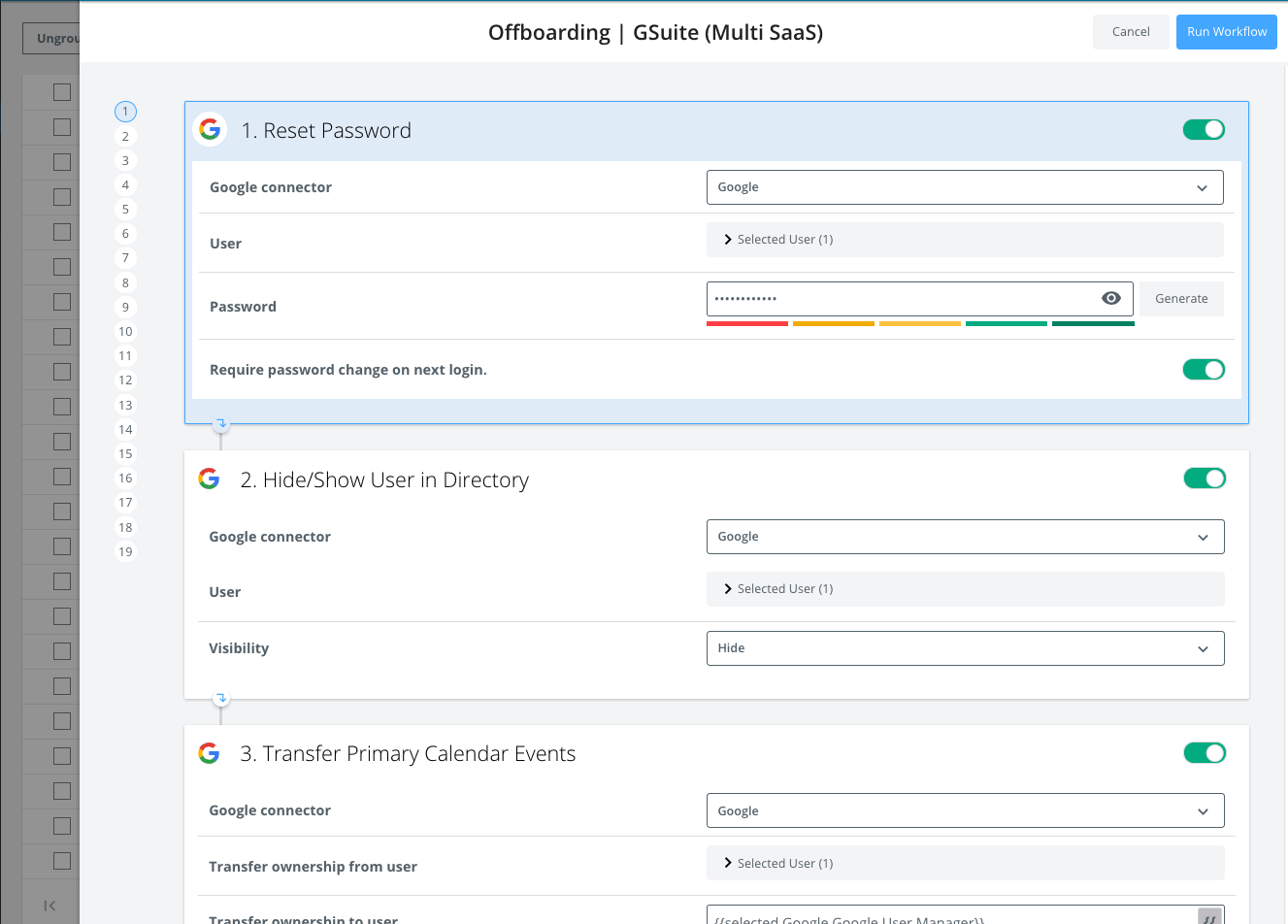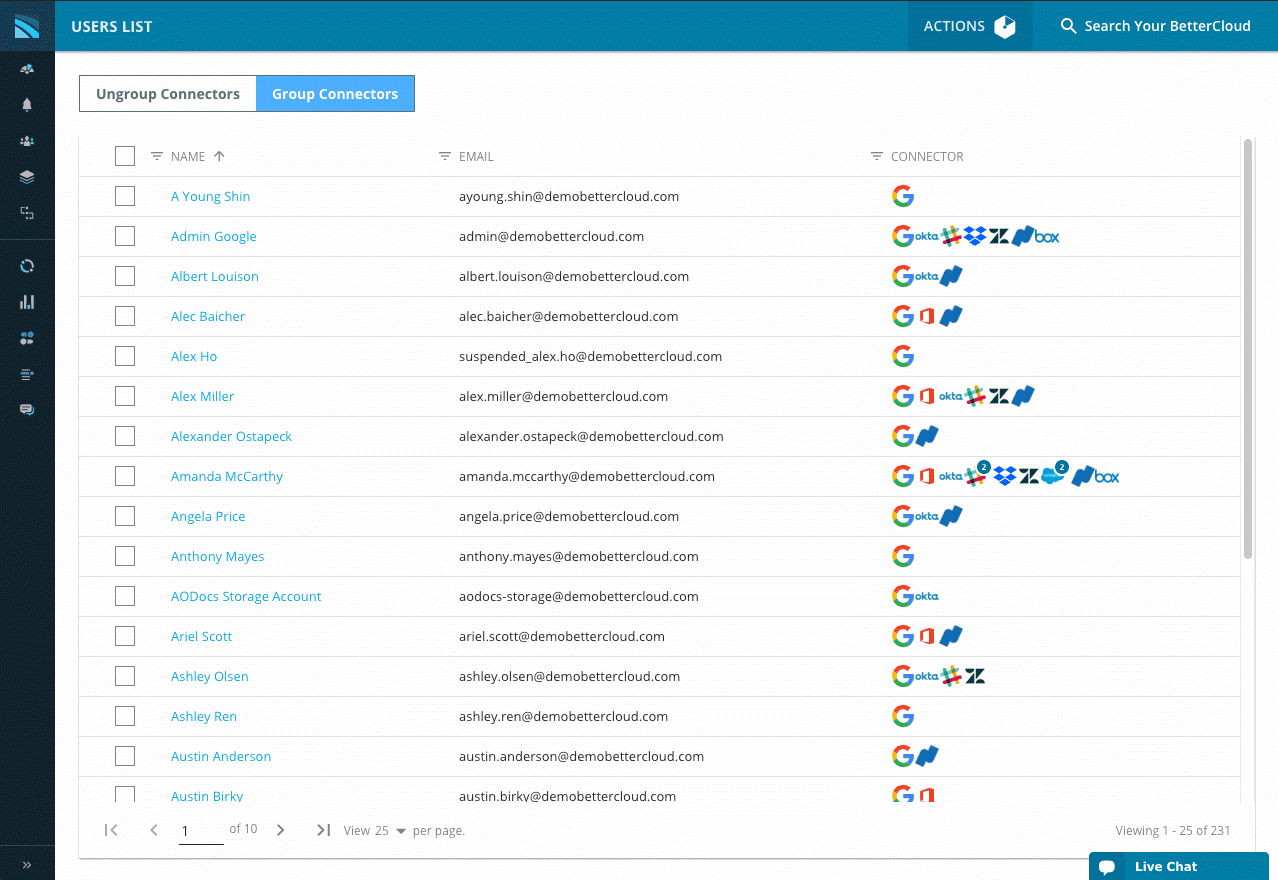On-Demand Workflows: Macros for IT (And Why Customers Love Them)
November 26, 2018
5 minute read

“Realistically, our IT team could use six or seven people, but we get by with three because we have to — it’s all about doing more with less.”
Like this director of IT from a healthcare consulting firm in Orlando, Florida says, most IT leaders run lean teams. When “do more with less” is the motto, becoming more efficient is critical; however, a constant stream of alerts, requests, and tickets seize IT professionals’ time, making it challenging to to manage a domain, let alone secure it.
Many of our customers have found that the easiest way to put time back in the day is leveraging automation, specifically automating onboarding and offboarding in BetterCloud. We’ve seen IT teams use BetterCloud to cut a 60-step onboarding checklist down to three to five steps, saving around 40 minutes per employee. From there, using automation to archive empty Slack groups, prevent email forwarding, and protect against risky file sharing are common policies that have helped IT professionals become more efficient and secure.
All of these policies are executed using BetterCloud’s workflow engine, which uses alerts or events to trigger automated actions. While this formula has made workflows our most popular feature, it has led to challenges as well. Customers have told us that business processes they execute using workflows are rarely one size fits all and often need to be edited to fit the unique situation. They also shared that they don’t want to wait for a trigger when they need to execute time-sensitive tasks.
That’s why what you see below sat at the top of our Features Requests page this summer.

Customers told us exactly what they needed: On-Demand Workflows.
So last month, that’s exactly what we released.
On-Demand Workflows combine the automation of workflows with the flexibility of manual actions, giving IT an enhanced level of control. Think of these workflows as customizable automation sequences (kind of like macros) where you can string together a collection of actions and press play when you want, instead of waiting on a trigger.
You can also take workflows you’ve already built and edit values or disable actions based on the specific circumstance. By eliminating time-consuming, manual tasks with On-Demand Workflows, IT teams are able to put time back in the day for business-critical projects. It’s all about doing more with less.
Here’s what one customer had to say in BetterIT, our Slack community with over 2,600+ IT professionals:

Here are three use cases that show why our customers are excited about On-Demand Workflows:
Execute dynamic onboarding & offboarding workflows
For one of the largest staffing agencies in the world, the arrival of On-Demand Workflows was personal. One of their IT team divisions consists of 10 helpdesk employees who handle user lifecycle management. Each Friday around 5 p.m., their team is given a lengthy list of recently departed employees whom they must fully offboard before they can leave for the weekend. Being able to “press play” on an offboarding workflow (and not have to wait for a trigger) is saving them ten minutes per offboarded user, allowing them to head home much sooner.
Another customer, a 300-person tech startup in San Francisco, has a very dynamic onboarding process because of the varied makeup of their workforce. Because they have contractors, part-time, and full-time employees in various locations, they wanted to be able to have one all-inclusive onboarding workflow that they can customize for each unique individual. Instead of having multiple similar workflows strictly based on attributes such as department, role, or employment type, they have much more flexibility. Now, with On-Demand Workflows, their team has all the possible onboarding steps they may need in a singular template that they can edit on a case-by-case basis.

These fully customizable automation sequences are empowering IT teams to be much more precise during onboarding and offboarding. With On-Demand Workflows, they can adapt each automation to their unique business needs.
Examples
For example, when offboarding a Dropbox user, IT likely wants to transfer that user’s files to their manager, but this may not always be the case for every offboarding situation. Now, IT can input the specific user to make sure the files end up in the right place.
Or perhaps a contractor only needs to be created in Google, added as a single-channel guest in Slack, and given access to the team’s Dropbox account for 60 days. Instead of manually taking those actions or giving the contractor too much access by onboarding them as you would a full-time employee, you can use an On-Demand Workflow in BetterCloud. String together these cross-application actions, execute them with the click of a button, and then save that as a template for future contractors.
Save money by freeing up underutilized licenses
One customer we recently worked with, a technology giant in New York City, was sitting on 1,300 suspended licenses, costing them $156,000 per year. To help them free up licenses occupied by suspended users, they used a BetterCloud offboarding workflow that transferred important data before automatically deleting the licenses.
Freeing up suspended user licenses is easy, but what about licenses underutilized by current employees? For example, there might be a user who has a Salesforce account but hasn’t logged in since 2015, or an active user who was provisioned in Dropbox but has never logged in. With On-Demand Workflows, you can continually free up additional funds by proactively uncovering underutilized SaaS licenses.
Example
As you can see below, you can simply filter in BetterCloud’s Users grid by last login date, select the users who ostensibly aren’t using their licenses, and execute an On-Demand Workflow. This workflow can send the users a Slack message (or email) asking if they still need their SaaS license, then wait a designated period of time before deleting the license. If the user responds saying they still need their license, simply remove them from the workflow.
This is a simple way to uncover savings in your environment and prove to your CFO that IT is not a cost center!

Create BetterCloud “macros” for any series of manual tasks
With On-Demand Workflows, the use cases for automating any series of tasks across your SaaS apps are endless.
Examples
Say your company completes an office move and IT needs to update data for hundreds of users. An On-Demand Workflow would allow you to easily add users to new groups and channels, and update their location across applications.
Similarly, employees change roles, departments, managers, and more over time. With an On-Demand Workflow, you can easily update profile information across all SaaS applications using your source of truth (e.g., G Suite, Okta, or Office 365).

On-Demand Workflows can also be used to delegate access in your environment. Say your team’s super admin is going on vacation for two weeks. You can build a template that temporarily gives super admin access to the next highest ranking team member until the super admin returns.
With On-Demand Workflows, all of these manual processes now take just a few minutes instead of hours, putting more time back in your day and empowering you to do more with less.
Learn more
If you want to learn more about how your company can save time and automate unique business processes, you can request a demo or talk to your BetterCloud Customer Success Manager.






